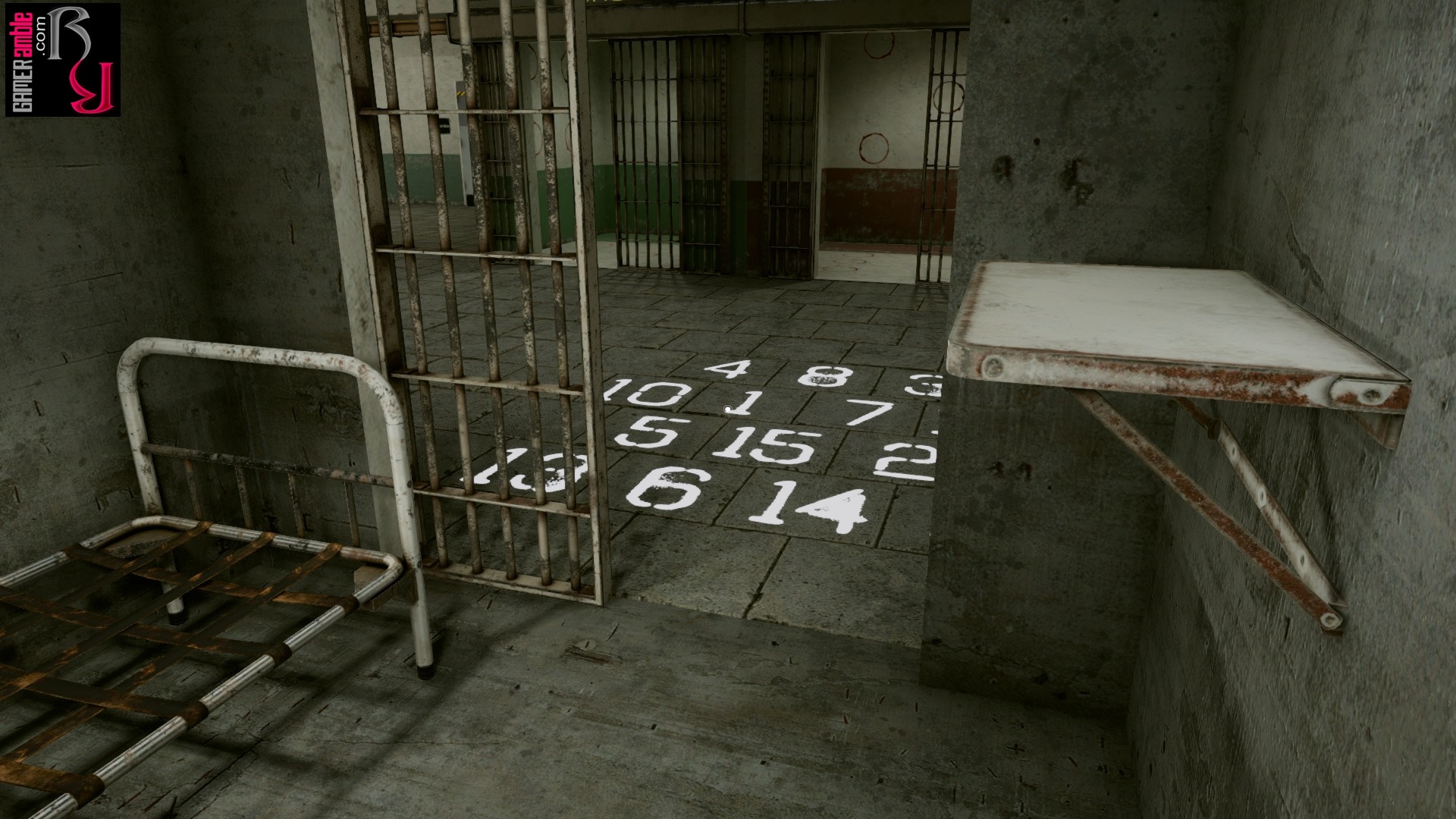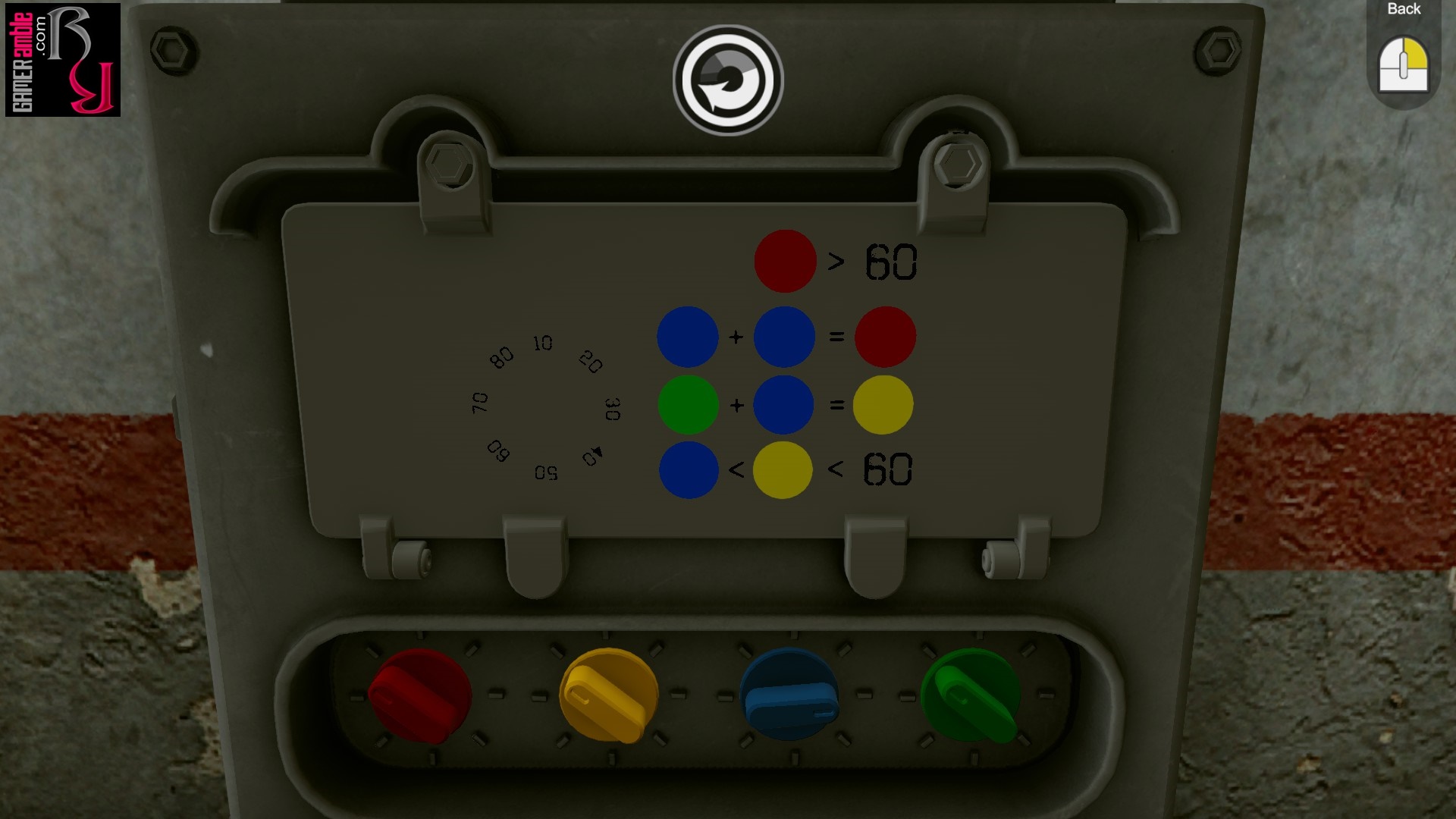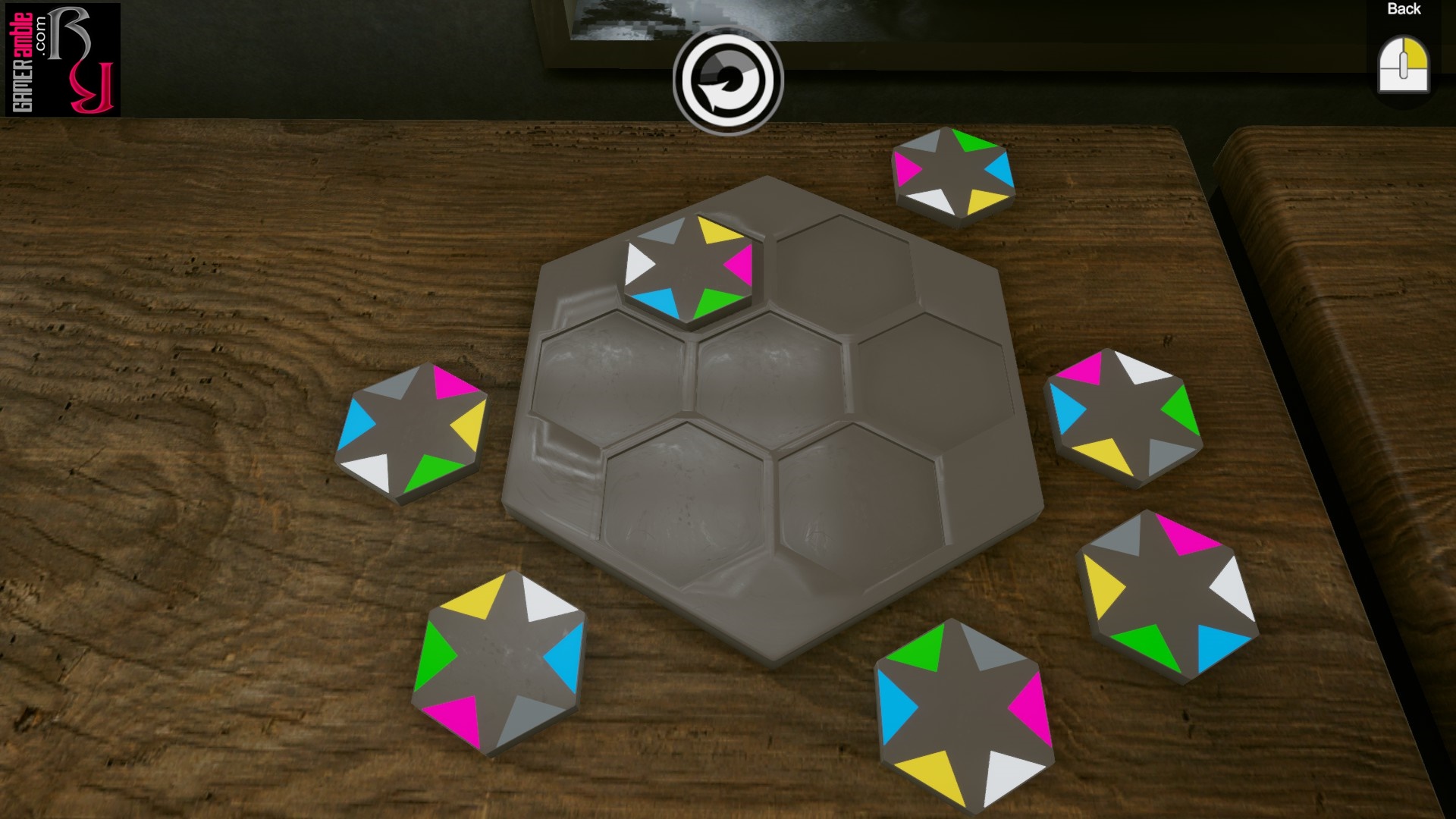Tested on Humans: Escape Room
Developer: mc2games | Publisher: mc2games | Release Date: 2021 | Genre: Escape Room / Adventure / Indie | Website: Official Website | Purchase: Steam
With their 2020 escape room game, Palindrome Syndrome, mc2games proved that they have a flair for designing interesting scenarios filled with tricky puzzles. Their latest release, Tested on Humans, follows the same formula but swaps the sci-fi setting of Palindrome Syndrome with something a little more down to earth. The game opens with Alex, the protagonist, waking up inside what appears to be a prison. Apart from a cryptic message scrawled on a wall the rest of her cell is filled with puzzles that need to be solved in sequence to open the door. However, once outside her cell Alex discovers that she is inside some type of sinister complex where medical experiments are taking place. With no sign of the other subjects or the staff, players must help Alex solve the logic-based puzzles that will hopefully lead her to freedom.
Players who have experienced Palindrome Syndrome will know exactly what to expect from Tested on Humans. It also meant that just like the first game we wasted a lot of time overthinking some of the puzzles. However, it does feel like the puzzles in ToH ramp up the difficulty a bit compared to the first game. The game is split into seven different areas and solving the final puzzle in an area opens up the next area. There are a few instances where we had to return to a previous area to find clues for a puzzle in the next area, but usually everything you need will be in your immediate vicinity. One thing we noticed is that some areas have so many different puzzles packed close together that it can be tricky to figure out which clues belong to which puzzle. Thankfully the game still tells you if you are lacking an important object when attempting a puzzle, so there is no time wasting in this regard. The developers have also added hints to the game, which can be unlocked if you are really stumped. There appears to be no penalty for making use of these either and all the achievements in the game can be earned simply by completing all the puzzles.
As with Palindrome Syndrome, ToH is viewed from a first-person perspective. This means that players must pay close attention to their surroundings as perspective sometimes factor into puzzle solutions as well. The developers have gotten good at hiding hints or solutions in plain sight and making some puzzles look more complicated than they really are. ToH appears to be running on the same engine as Palindrome Syndrome, so once again graphical options are restricted to presets. Some of the areas in ToH look a little more grungy compared to the sterile environments of Palindrome Syndrome, but it’s still easy to work on the puzzles without getting distracted by your surroundings. We should mention, however, that a lot of the puzzles involve the use of colors, which could pose a problem for colorblind players.
The audio in ToH is a step up from Palindrome Syndrome and the music is a nice match for the lonely atmosphere of the game. The voice acting is once again somewhat sparse, but perfectly serviceable. ToH can be played with either a mouse and keyboard or controller. Either option works fine as there are no timers for the puzzles or a great degree of precision required. Despite the slightly eerie atmosphere, the game doesn’t feature monsters, chases or jump scares either. It’s still advisable to save your game regularly as there is no autosave feature.
Tested on Humans doesn’t have much of a story, beyond trying to escape from captivity, but the developers still managed to sneak a couple of emotional twists in towards the end. Although it initially looks like the game will be very easy the puzzles quickly become more complex and challenging. They are still very rewarding to solve, though, and none of them felt illogical or unfair. Mc2games is quickly establishing a reputation for crafting cerebral challenges that offer more unique puzzles and interesting premises than the hidden object games that puzzle fans usually have to turn to. It can be frustrating to get stuck on a puzzle, especially if you are too stubborn to use a hint, but the satisfaction of figuring out the solution makes it all worthwhile.
*Review based on version 1.0.3 of the game.
System Requirements
- OS: Windows 7
- Processor: Intel Core i3 2.00 GHz
- Memory: 4 GB RAM
- Graphics: NVIDIA GeForce 450
- DirectX: Version 11
- Storage: 4 GB available space




















